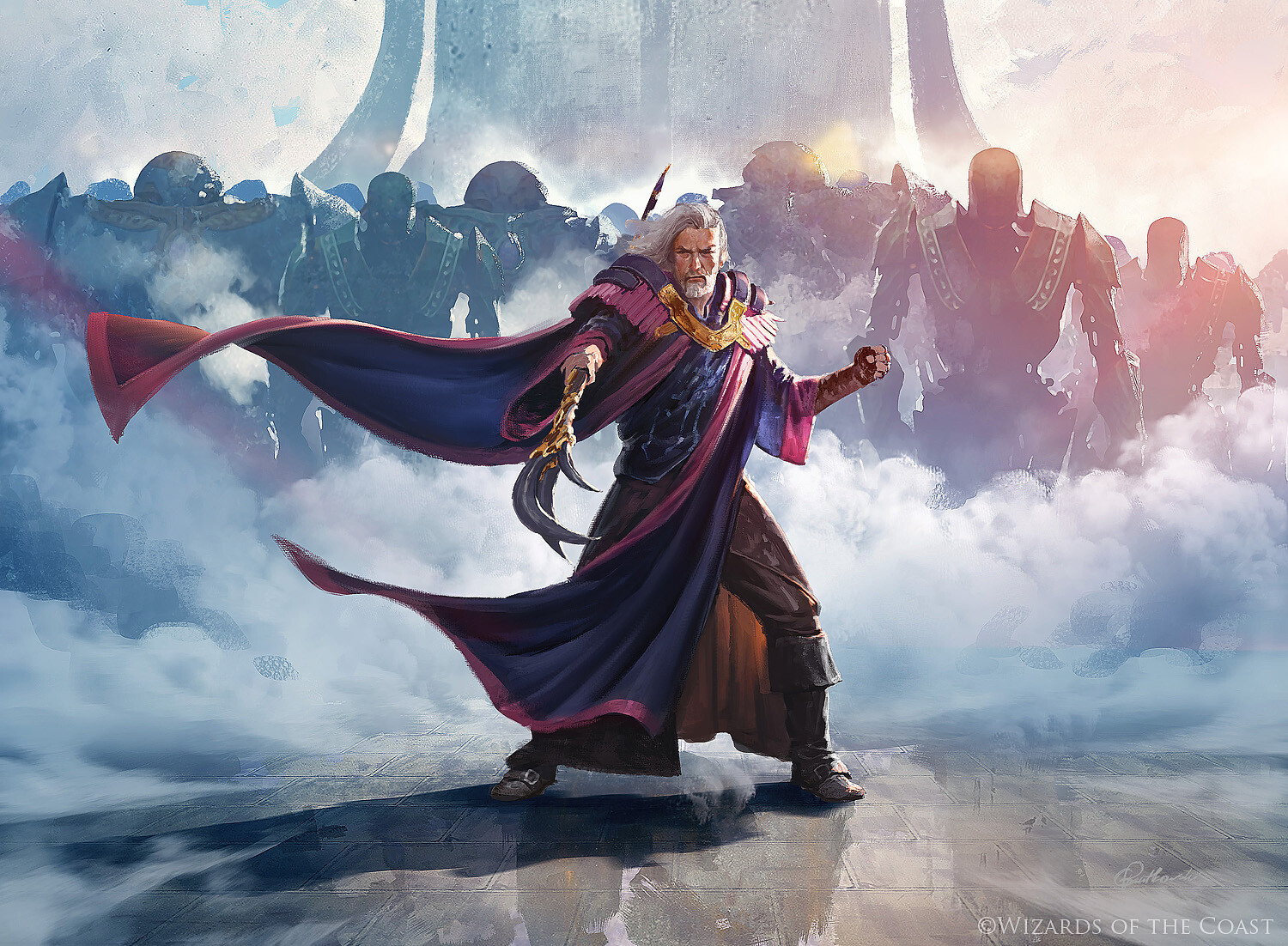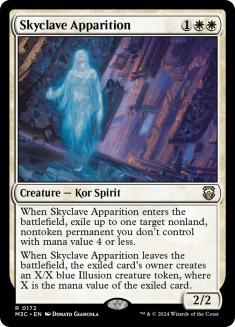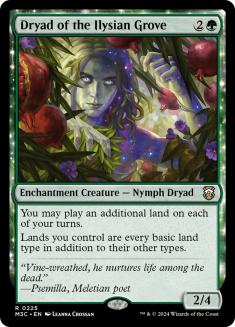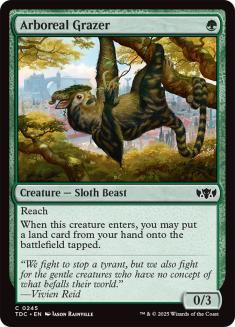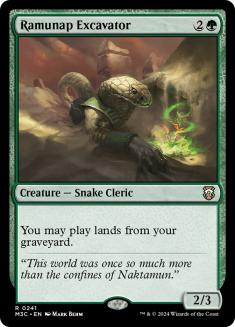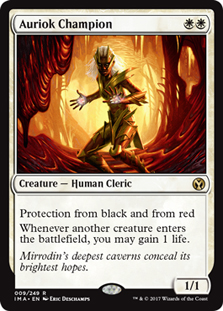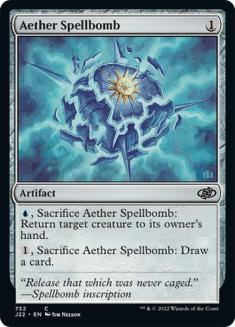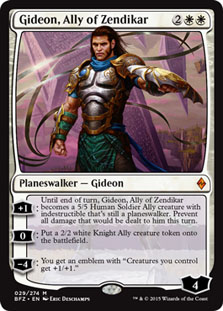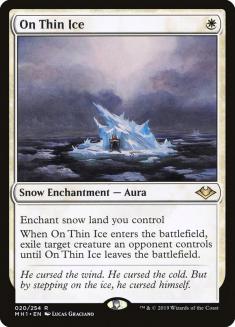We’re a couple of weeks removed from Magic’s most recent Banned and Restricted update, and the early returns for Modern look immensely positive. The format is diverse and dynamic, and plenty of beloved decks like Azorius Control and Eldrazi Tron have returned to the metagame now that it’s not dominated by Uro, Titan of Nature’s Wrath and Field of the Dead.
Even more exciting, it seems like players are brewing more, as when I was looking over results from last weekend, several decks caught my eye. Today I’m going to delve into some of the more interesting rogue decklists and analyze what they’re doing right, where I think they can improve, and how I would build each deck moving forward.
The goal here is to look at some cool new decks that could potentially add to the vast landscape of Modern, but also give insight into how I look at and build new decks in a much more powerful format than Standard.
1. Selesnya Company
Creatures (27)
- 4 Birds of Paradise
- 4 Noble Hierarch
- 4 Knight of the Reliquary
- 3 Courser of Kruphix
- 3 Tireless Tracker
- 2 Ramunap Excavator
- 1 Arboreal Grazer
- 3 Dryad of the Ilysian Grove
- 3 Skyclave Apparition
Lands (27)
Spells (6)

Longtime Modern players may recognize this deck from a few years ago, when a previous iteration achieved some minor success. It may look like a mishmash of creatures, but this deck plays a great attrition game with the card advantage offered by Collected Company, Courser of Kruphix, and Tireless Tracker as well as the utility from Knight of the Reliquary. The deck wasn’t powerful enough to stay around for long, but some powerful recent printings, namely Skyclave Apparition and Dryad of the Ilysian Grove, have breathed new life into the deck.
At this point, Skyclave Apparition is staking a claim as one of the best white cards ever printed. It’s a mainstay in every competitive format and continues to show up in more and more places. But this one may be the best home yet. Collected Company decks tend to struggle to have enough interaction because you need to play enough creatures to make Company reliable as well as the four copies of Company itself. A powerful, flexible piece of interaction that you can hit off Collected Company is a huge asset. Reflector Mage elevated Collected Company in Standard for the same reason, and Apparition is a significant upgrade.
Notably, we’ve already seen Selesnya Company with Heliod, Sun-Crowned adopt Skyclave Apparition as well, even when having that interaction is less important for a deck that’s looking to assemble a combo and not necessarily play a fair game. That speaks to the power of Skyclave Apparition in a Company shell, and this one will take even greater advantage of it.
Dryad of the Ilysian Grove doesn’t jump off the page as immediately impactful, but I think it’s just as important here because it adds another layer to the deck. As I noted earlier, this archetype is very good at grinding out games against interactive decks, but it can struggle to close games, especially if you keep Knight of the Reliquary in check. As a result, it’s vulnerable to decks that take over long games with over-the-top powerful cards like Ugin, the Spirit Dragon or Tibalt, Cosmic Impostor, negating the small advantages this deck accrues over time.
These kinds of cards are particularly problematic because the nature of Collected Company means you’re restricted in how you can fight this arms race. Dryad of the Ilysian Grove lets you build towards a Valakut, the Molten Pinnacle end-game that will re-trump those powerful cards without sacrificing the effectiveness of your key card.
Moreover, Dryad also plays well with your value gameplan, supercharging the card advantage generated from Tireless Tracker and Courser of Kruphix, as well as accelerating the mana denial plan of recurring Ghost Quarter until your opponent has no lands left. The end result is a deck that can employ a midrange gameplan, a prison gameplan, and a ramp gameplan as necessary, and that’s scary to try to answer from the other side of the table.
Given how important these new additions are, I’m surprised not to see the full four copies of each. They both bring unique abilities to the deck and are fine in multiples, so I want to max out on each. I’m also skeptical of the sideboard, which sacrifices a lot of power in order to keep the creature count high. I’m not willing to sacrifice more powerful options in a format known for high-impact sideboard cards. Here’s where I would start:
Creatures (27)
- 4 Birds of Paradise
- 4 Noble Hierarch
- 4 Knight of the Reliquary
- 3 Courser of Kruphix
- 2 Tireless Tracker
- 1 Ramunap Excavator
- 1 Arboreal Grazer
- 4 Dryad of the Ilysian Grove
- 4 Skyclave Apparition
Lands (27)
Spells (6)

My initial instinct was to cut the singleton Arboreal Grazer, but this deck is reliant on accelerating from one to three, so those mana creatures are too important. In fact, I’d consider more copies of Grazer so you can accelerate more reliably in the face of Fatal Push and Lightning Bolt. But Arboreal Grazer is a huge liability when you mulligan, so I’m not ready to make that leap yet.
Instead I cut a copy each of Ramunap Excavator and Tireless Tracker. Excavator is the least important card in the deck, and useless in multiples. You want to have access to it but it’s far from necessary, so I’m happy with one copy. Trimming a Tracker is a concession to the post-Dryad reality that this deck is less reliant on playing attrition. And in a world where Lightning Bolt is quite popular, I’d rather lean toward Courser of Kruphix in the split.
In the sideboard, I cut down on some of the weaker creatures like Scavenging Ooze, which won’t be enough to shut down dedicated graveyard decks, and Eidolon of Rhetoric, which doesn’t have many applications in the current metagame. Instead I included Soul-Guide Lantern and a single copy of Loaming Shaman to hit off Collected Company to wreck graveyards, as well as a couple of Damping Spheres because I want the help against big mana decks. Damping Sphere also comes in against decks like Gifts Storm where you would’ve wanted Eidolon.
It’s going to be trickier sideboarding with this list since you’re already on the low end for Company hits, but don’t be afraid to cut a utility land or two that isn’t good in your matchup.
There are a lot of midrange decks in Modern that play a great attrition game and have the removal to contain the Monastery Swiftspear decks, but they tend to struggle against Primeval Titan and Urzatron decks. But this deck’s versatility helps it hang against both ends of the Modern metagame, and that’s why I think it has a lot of potential moving forward.
2. Esper Urzablade
Creatures (13)
Planeswalkers (1)
Lands (21)
Spells (25)

Urza decks have had a hard time since Mox Opal was banned, but now that the rest of the format has been powered down, I think Urza is operating at an appropriate power level. This list is clearly built with Swiftspear decks in mind, with the full four copies of Engineered Explosives and three copies of Auriok Champion in the sideboard. However, I think Auriok Champion is inappropriate here for a couple of reasons.
First, it’s very difficult to cast on Turn 2 in a deck that has only sixteen white sources. Chromatic Star can help but not much and Auriok Champion really needs to come down early to be effective. Second, Champion is so common by now that every Swiftspear player is prepared to answer it. That would be fine if the typical answer they play, Kozilek’s Return, didn’t also answer several of this deck’s threats, but since it does, I see Auriok Champion as a card that, while powerful, is playing into your opponent’s hand too much.
My other qualm is with the manabase itself. For a deck that wants to cast a powerful four-drop, including five fastlands is too much of a risk. This deck could easily incorporate some Pathways, which provide reliable fixing for a deck that doesn’t have a lot of color-intensive mana costs without the risk of an untimely tapped land.
Despite these issues, I appreciate that this deck, like the previous one, is making an effort to diversify its plan of attack. Tezzeret, Agent of Bolas and Stoneforge Mystic give the deck more standalone threats that alongside Urza, let you compete on the battlefield even in games where your combo is disrupted.
Here’s my take on this deck:
Creatures (12)
Lands (21)
Spells (27)

My list is a bit more focused on the combo in the maindeck with Whir of Invention taking the place of the fourth Stoneforge Mystic and the Tezzeret, Agent of Bolas, which made its way into the sideboard. I was worried about diminishing returns on Stoneforge Mystic when you only have two Equipment to find, as this is not a deck that can afford to draw dead cards.
To facilitate the Whirs, I replaced one copy of Engineered Explosives with an Aether Spellbomb, which does a lot of small things for this deck like disrupting creature combos, slowing down aggro decks, drawing cards with Emry, and even bouncing Urza so you can generate more Construct tokens. It’s been a valuable singleton for Whirza decks in the past and I don’t see that changing.
In the sideboard my biggest change was to add more counterspells. My goal is to be able to tap out for Urza as early as possible while leaving up a piece of interaction for your opponent’s reply. I’m listing a split of Aether Gust, Disdainful Stroke, and Ceremonious Rejection alongside the Mystical Disputes, but feel free to adjust the numbers on those as the metagame evolves. Just make sure you’re well-prepared for the big mana decks.
Urza is one of the most powerful creatures in all of Modern, and even without the same supporting cast of Mox Opal and Arcum’s Astrolabe, I think it can compete again.
3. Boros Control (Yorion)❄
Creatures (28)
- 1 Burrenton Forge-Tender
- 4 Stoneforge Mystic
- 4 Wall of Omens
- 4 Thraben Inspector
- 4 Ranger-Captain of Eos
- 4 Charming Prince
- 3 Lurrus of the Dream-Den
- 4 Skyclave Apparition
Lands (32)
Spells (20)

Martyr of Sands decks have been around in Modern for a while now, and over the years they evolved from gimmicky lifegain decks to a powerful attrition strategy that thrives in metagames with plenty of aggro and midrange. This deck doesn’t contain the lifegain elements, but instead focuses entirely on generating card advantage with value creatures. That’s the more impressive element of the deck anyway, and when it comes to the combination of creatures and attrition, the new name of the game is Yorion, Sky Nomad. So while this list doesn’t bear much resemblance to Martyr decks, it is very much a spiritual successor of them.
I love the idea of moving away from the lifegain package since it isn’t that important to the deck’s actual gameplan, and there are plenty of other targets for Ranger-Captain of Eos. This list only maindecks Thraben Inspector and Burrenton Forge-Tender but I’d like to see a larger toolbox there. Both Walking Ballista and Giant Killer are nice options to have that are fine to draw by themselves.
I’m also seeing a deck that’s probably going overboard on removal. With so many early creatures, you can play defense without removal, and decks like this historically struggle with big mana strategies, so it needs some threats that can apply more pressure, because Ghost Quarter and Field of Ruin only buy so much time against Mono-Green Tron. Serra Ascendant is one of Martyr’s best cards in those matchups because it can apply early pressure, so that’s a void this deck needs to fill.
Lastly, I’m not sure what the red splash is actually doing. Word of Seizing is a gimmicky sideboard card and the singleton Embercleave doesn’t have a lot of high-value targets, so it can easily be replaced by Maul of the Skyclaves. I’d look to cut down to one color like the following:
Creatures (29)
- 1 Burrenton Forge-Tender
- 4 Stoneforge Mystic
- 4 Wall of Omens
- 4 Thraben Inspector
- 1 Walking Ballista
- 4 Ranger-Captain of Eos
- 1 Giant Killer
- 2 Charming Prince
- 3 Lurrus of the Dream-Den
- 4 Skyclave Apparition
- 1 Halvar, God of Battle
Planeswalkers (3)
Lands (32)
Spells (16)

Gideon, Ally of Zendikar is my choice for a threat to apply maximum pressure, though I’m also including one copy of Halvar, God of Battle to not overload on a legendary threat and to see its potential with the powerful Equipment in the deck. I also included the full four copies of Damping Sphere in the sideboard to help out in the big mana matchups. I’m still worried about them, but this deck should be rock-solid against opposing aggro and midrange strategies, which are quite popular right now.
The shift to one color means you have enough snow lands to play On Thin Ice as your primary sideboard removal spell, a more versatile answer than Celestial Purge that you can even recast with Lurrus of the Dream-Den should your opponent destroy it or the land it enchants.
This deck is a great lesson in the importance of not becoming overly attached to old parts of a deck. Sometimes new cards lead you down a different direction and you have to embrace the change. Even Affinity eventually evolved to have few if any cards with its namesake mechanic.
The post-ban Modern metagame is still taking shape, and while most players are focusing on retooling established archetypes, now is a great time for brewers to take advantage of unexplored decks and cards that were suppressed by the power of Uro and Field of the Dead. If you’re the kind of person who is always searching for the next great thing, I’d encourage you to give these decks a second look.

